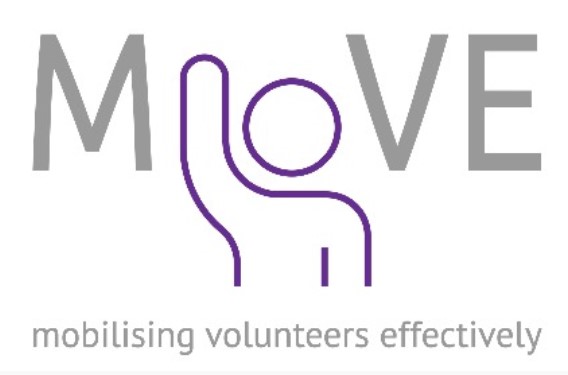MoVE Project: Pandemic Opened Door to Greater Volunteer Action
Understanding how to create the conditions for a thriving civil society — that works in partnership with local governments and communities to reduce inequalities and improve quality of life for their citizens — has long been a concern of social scientists.
Over the last two years, the Enabling Social Action (ESA) program in the United Kingdom has contributed to this research agenda. ESA has worked with a network of 1,200 practitioners across the public sector and civil society, to try to understand the challenges and barriers facing local authorities as they seek to develop and embed cross-sectoral partnership, collaboration and co-production processes into both strategy and action, and to create an evidence base for why such processes are beneficial for local communities. Qualitative data gathered from a series of workshops, six in-depth case studies, focus groups and semi-structured interviews with commissioners and voluntary and community sector (VCS) organizations highlighted the added value that could be created from stronger partnership approaches, and generated important learning about the enablers, barriers and innovative frameworks for such work

The ESA research found that, despite a growing cohort of local government and VCS innovators keen to explore new forms of collaborative social action and coproduction pre-pandemic, there remained many challenges and barriers associated with ‘turning the oil tanker’ of local authority bureaucracy. Ultimately, operational processes embedded in risk-averse, hierarchical local authority structures have meant that progress in shifting power to those with local knowledge has largely been slow and incremental. Often, good practice examples were restricted to small pilot initiatives or applied within targeted wards, rather than being embedded within broader local authority practice.
In many ways, the pandemic has created an opportunity to do things differently. The need to respond quickly to local needs has resulted in innovative and creative responses, and social scientists were enabled to capture the impact of these innovations. So the MoVE project was designed; a collaboration between the universities of Sheffield, Hull and Leeds, it is funded by the Economic and Social Research Council as part of the UK Research and Innovation’s Rapid Response call.
In June, our team of researchers set out to understand how volunteers have been mobilized to meet community needs. In the first stage, we carried out over 50 semi-structured interviews with local authorities and VCS organizations across the UK, to understand how they had coordinated and supported community responses to help those in need. What we found was a radically different policy environment to that which had long frustrated advocates of co-produced, strength-driven and place-based approaches to community.
In the space of a few short weeks, the necessity of meeting extensive and complex community needs led to an impressive mobilisation of community support, new innovations in partnership working, and a resourcing of social action that has long been identified as key to achieving better outcomes. Traditional aversion to risk was swept away by the immediate pressures of the pandemic, enabling the swift implementation of plans. Communities demonstrated immense resourcefulness in their capacity to self-organise, as informal groups of volunteers sprung up to deliver shopping and collect prescriptions, well in advance of formal support structures.
Our research has produced three reports. These outline the key lessons from the lockdown period to embed going forwards, model the variety of approaches that Local Authorities took in their community response, and explore the evolving patterns of community needs and volunteer responses. In all these reports, a number of common themes emerge with significant implications for policymakers and community practitioners.
The most prominent of these has been the importance of local knowledge, infrastructure and resources in both identifying and responding to community needs. A government shielding list and a centralized system of (largely inaccessible) volunteers proved woefully inadequate to navigate the complex challenges of communities during the pandemic. Beyond clinical vulnerability, local authorities needed to understand those who had been affected by the socio-economic fallout of the pandemic and who might need additional support. They also had to identify where communities had already mobilized and recognize when they might need resources or support, and when they were best left alone.
This necessitated a collaborative effort with those who were closer to the ground. VCS partners were brought into cross-sectoral response groups characterized by flatter power structures. The reduction of aversion to risk allowed informal volunteering to flourish, unburdened by the slow and often bureaucratic formal procedures surrounding training and safeguarding. Importantly, all of this has been underpinned by the provision of the resources needed to supplement food banks and distribution centers, to distribute devices for the digitally excluded, and to provide emergency funding for VCS organizations.
As we edge closer to the new year, with approved vaccines on the horizon, there is a sense that we are beginning the shift from crisis to recovery. However, concerned practitioners describe this more aptly as a transition from a health crisis into an economic crisis. In spite of the announced increases in funds for local authorities in the most recent spending review, council leaders have argued that these increases are far from what is needed to meet local needs and balance budgets. Our data reveals a profound concern across civil society and local government about the future of the VCS. As funding cuts come in, their seat at the table is under threat and the sustainability of many organizations is in question. Equally, the advances in place-based, community-centered work risks being undone by the return of bureaucracy as local authorities face questions about accountability and spending. All this in a climate of increased community demand as the socio-economic consequences of the pandemic unfold.
As social scientists, we should ensure that these lessons are learned and embedded going forwards, and not swept away by public sector cuts and a return to command and control. Now is the moment to critically examine the role of the local authority, as a facilitator and enabler, to acknowledge the role of the VCS and put in place appropriate support, and to understand and embed the conditions that are necessary to ensure that communities are at the center of our social and economic recovery.
As we move into the second phase of our study, we are working in depth with a number of partners, in order to ensure that the lessons from this experiment are not lost. Social science has a key contribution to make, by building an evidence base which supports the notion that if these ways of working were effective in a crisis, they may prove so too in recovery and beyond.


























































































